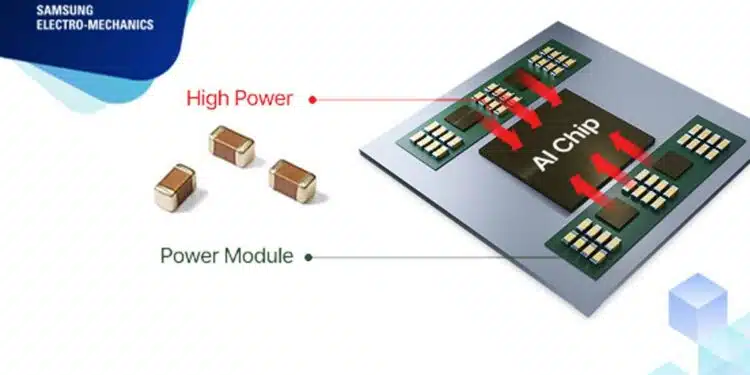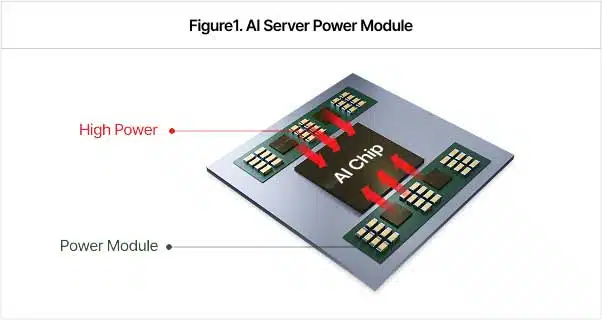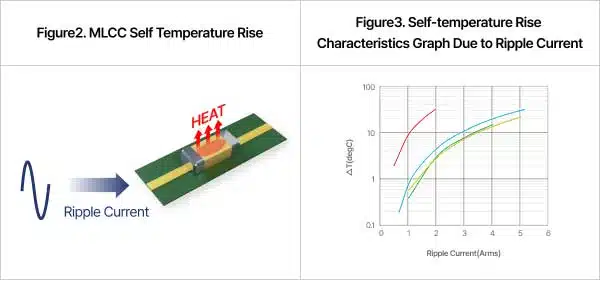Samsung Electro Mechanics is introducing high-capacitance 4.7uF 100V 1206 MLCC ceramic capacitors in line with the expansion of 48V power systems for AI servers.
With the increase of power consumption of AI servers, a resulting trend is the adoption of more 48V Power Systems with better efficiency.
The 48V Power System enables the delivery of higher power with the same current. The 48V System in AI server circuits is generally applied in two key areas:
- The 48V output circuit of the Server PSU (AC/DC).
- The 48V input circuit of the Power Module mounted on the server board. (as shown on Fig.1.)
From a design perspective, when applying high-capacitance 100V MLCC to 48V input/output voltage circuits, the usage of Soft Termination to reduce mechanical stress is considered, as well as the evaluation of the Self-temperature Rise of the MLCC caused by high ripple currents – see Fig. 2 and 3.
Samsung Electro-Mechanics is mass-producing the high-capacitance 100V Soft Termination MLCC CL31Y475KCK64N# (1206 inch, 4.7uF, X7S) product to meet the needs of 48V Power Systems for AI servers.
| Samsung | Size | Rated Voltage | TCC | Capacitance | MP Status | Sample |
|---|---|---|---|---|---|---|
| CL31Y475KCK64N# | 1206 inch(3216mm) | 100V | X7S | 4.7uF | MP | Available |

































